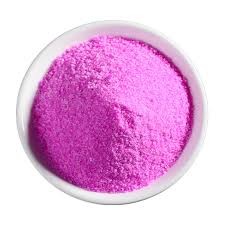
20:20:20 - NPK
Description
fertilizer with an NPK ratio of 20-20-20 provides a balanced supply of nitrogen, phosphorus, and potassium, supporting essential plant functions such as growth, development, and stress tolerance. This balanced nutrient composition is suitable for a wide range of crops and can be used to promote healthy plant growth, improve yield, and enhance overall crop quality when applied appropriately according to crop needs and soil conditions.
Mode of Action
Nitrogen (N): Nitrogen is a key component of chlorophyll, the pigment responsible for photosynthesis. It promotes vegetative growth, leaf development, and overall plant vigor. Nitrogen is involved in protein synthesis, enzyme activity, and various metabolic processes within plants. It enhances the synthesis of nucleic acids, which are essential for cell division and growth. Phosphorus (P): Phosphorus is vital for energy transfer processes within plants, such as ATP production, which provides energy for cellular activities. It promotes root development, flowering, and fruiting by stimulating cell division and differentiation. Phosphorus plays a crucial role in nucleic acid synthesis, promoting DNA and RNA formation. Potassium (K): Potassium regulates osmotic pressure within plant cells, maintaining cell turgor and water balance. This helps plants withstand drought stress. It activates enzymes involved in photosynthesis, respiration, and other metabolic pathways. Potassium enhances nutrient uptake and translocation, improves disease resistance, and promotes overall plant health and vigor.
Applications
Pre-Planting or Incorporation: Apply the fertilizer before planting or incorporate it into the soil during soil preparation. Broadcasting or banding the fertilizer evenly across the planting area ensures uniform distribution of nutrients. Side-Dressing: For established plants, side-dress the fertilizer by applying it alongside the rows or around the base of the plants. Incorporate the fertilizer into the soil surface to prevent nutrient loss through runoff or volatilization. Foliar Application: In some cases, foliar application of the fertilizer may be appropriate, especially for quick nutrient uptake or correcting nutrient deficiencies. Dissolve the fertilizer in water according to recommended rates and spray it directly onto the foliage of the plants. Application Rates: Determine the appropriate application rates based on soil test results, crop nutrient requirements, and growth stage. Follow manufacturer recommendations or consult with agricultural experts for specific guidance on application rates. Timing: Apply the fertilizer at the appropriate times based on the nutrient demands of the crops. For example, apply nitrogen-containing fertilizers during periods of active growth and phosphorus-containing fertilizers during root development and early flowering stages. Split applications may be beneficial for providing nutrients throughout the growing season, especially for crops with extended growth periods. Safety Precautions: Follow safety guidelines and precautions mentioned on the fertilizer label. Wear appropriate protective gear such as gloves and eyewear when handling and applying fertilizers to prevent skin or eye irritation.
| Crop | Common name of the Pest | Dose/acre(gm) | Dilution in Water (Liter) | Waiting Period(Days) |
|---|---|---|---|---|

